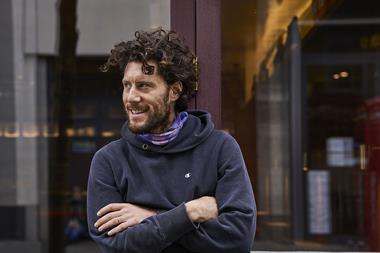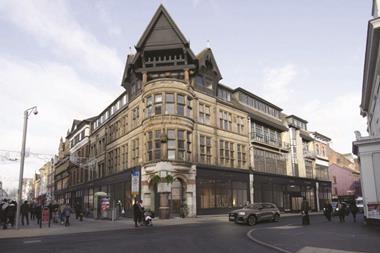COP26 – the global climate summit being held in November this year – will be a defining moment for humanity.

Either nation states from around the world will reach agreement to ratchet up their climate ambitions, and take decisive action to limit global temperature increases to 1.5°C, or they will fail to do so, in which case we will face runaway climate change scenarios by the end of the century.
Just this month alone, the world has witnessed only too starkly how such scenarios may look and feel – scorching heatwaves, devastating wildfires, mass evacuations, deaths, torrential rainfall, flooded infrastructure and abandoned homes and businesses.
The built environment has an enormous role to play in the transition to a zero carbon economy – it is both a significant part of the problem but also a key part of the solution. So at COP26, the property and construction industries have a unique opportunity to demonstrate leadership and showcase what could be possible when it comes to the future of buildings, cities and infrastructure.
So what can we expect for this sector from COP26?
First up, a whole day of the conference will be dedicated to cities, regions and the built environment. The day will feature discussions and insights on the global and regional differences in building regulations and industry initiatives to tackle the emissions arising from our urban spaces, as well as how these are increasingly using nature-based solutions to adapt to extreme weather events.
Global institutions such as the World Green Building Council, Global Association of Buildings & Construction, World Resources Institute, Architecture 2030 and many others will draw upon content from the rapidly growing global movement to accelerate net zero carbon buildings and cities.
Global ABC will host a physical Built Environment Pavilion during the two weeks in Glasgow, and 100-plus organisations in the UK have joined forces to create a Built Environment Virtual Pavilion. This is a platform for global industry leaders to share sustainable built environment solutions and a space for the public to engage with these in playful and dynamic ways.
Through a digital exhibition of global projects and places, as well as through events and downloadable content, those entering the virtual space will be inspired by a vision of a sustainable future and encouraged to take action. UKGBC is calling on Property Week readers to engage with the Virtual Pavilion by submitting the very best net zero, circular and nature-embracing built projects to be showcased in the exhibition.
But time is ticking – the deadline for responses is Monday 2 August at 23.59 BST.
COP26 will also feature the launch of a net zero whole-life-carbon roadmap for the UK built environment sector. UKGBC – with which Property Week launched the Climate Crisis Challenge – in collaboration with dozens of other partners across the industry will be publishing this science-based trajectory for how the UK built environment will make the transition to net zero carbon over the couple of decades ahead.
As highlighted recently by the Climate Change Committee, each and every sector of the economy will need a plan to indicate how it intends to achieve net zero carbon before 2050 – so this built environment roadmap will be a crucial starting point for our sector.
Julie Hirigoyen is chief executive of UKGBC






























No comments yet